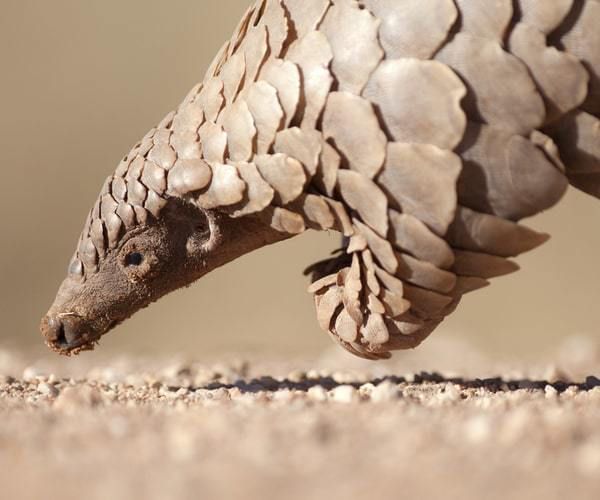
One of the most enticing things about travelling abroad is the chance to see the fascinating and unusual creatures of the world. There are many iconic wildlife experiences, whether it be looking at lions laze in the grasses of South Africa, meeting mountain gorillas in the dense jungles of Rwanda and Uganda or watching wildebeest thunder across the Serengeti plains. However, there are plenty of phenomenal animal-spotting experiences across the globe that are less well known, and often overlooked. We’ve collated some of those very experiences to bring you our top 5 overlooked animals.
? Pangolin in Africa
? Tapir in Central and South America
? Manatee in the Amazon Basin
? Fossa in Madagascar
? Tarsiers in Borneo
Pangolin
A shy nature and being the world’s most trafficked mammal mean the pangolin is a rare spot, but its definitely not one you will forget. These unique looking animals are the only mammal in the world to be covered head to tail in scales, which are large, hard and protect them from the jaws of predators. They can be found in a number of African countries including Botswana, Mozambique, Zimbabwe, Tanzania, Zambia and parts of Uganda, Kenya, Malawi and Namibia.
In these countries, the Big 5 game often take the top spot for desired wildlife viewing, and with good reason, but seeing the elusive pangolin foraging for insects and larvae is a uniquely special experience.
Did you know?
A Pangolin has a long, thin tongue that can grow to longer than the length of its body and helps it to eat around 70 million insects a year!
Tapir
The Thai name for a tapir is ‘P’som-sett’ which roughly translates as ‘the mixture is finished’ and comes from a belief that they were created from the leftover parts of other animals. With a body similar to a large pig and a snout like a small elephant trunk, it’s easy to see why! This bizarre creature can be found in Central and South America in Costa Rica, Mexico, Venezuela, Brazil, Argentina, Bolivia, Peru, Ecuador and Paraguay, nations more well-known for their birdlife, monkeys and marine life.

Tapir’s generally inhabit forest and jungle regions and can be spotted searching for delicious berries, fruit and leaves along well-worn trails. If you’re lucky you may spot an adorable baby tapir which has a distinctive striped coat.
Did you know?
Tapirs are excellent swimmers. When approached by a predator they will often run for the water, using their long snouts as snorkels.
Manatee
The ‘gentle giants’ of the water, manatees are large, slow-moving aquatic creatures that many sailors of the past mistook for mermaids. The Amazonian manatee, the smallest of the species, lives in the Amazonian Basin which covers Brazil, Colombia, Peru, Bolivia and Ecuador. They are friendly, inquisitive animals and tend to flock towards human activity, which makes for a great observation experience but can also make them vulnerable.

Manatees have hippo-like snouts, fore-limbs that resemble paddles and long, flat rear end. Travellers may typically head to the Amazon in search of jaguars, monkeys, caiman and birdlife but an encounter with one of the most peculiar animals in the region is a must.
Did you know?
Manatees only have six neck vertebrae (compared to the seven most other mammals have) which means they are unable to turn their heads and must turn their whole body around to see what’s behind them.
Fossa
Fossa are found exclusively in Madagascar and are the island’s top predator. Reaching up to six feet in length, thanks to their long tails, they look something like a cross between a dog, a cat and a mongoose. They hunt day and night, on the ground and in the trees and are the only predator capable of hunting large lemurs as they are both faster and better camouflaged.

The fossa may not be as famed as Madagascar’s lemurs, chameleons and geckos but it’s every bit as exciting. Sightings of these elusive creatures are relatively rare but head to Kirindy Reserve for the best chance to see them.
Did you know?
There are many Malagasy legends about the fossa. One states that the animal is capable of licking a person in such a way that it sends them into a trance from which they will never awaken.
Tarsiers
Think of Borneo and you immediately picture an orangutan effortlessly moving from branch to branch of dense jungle. Yet there is another tree-dwelling creature that deserves just as much attention – the tarsier. This tiny primate is only around 9-16 cm in length, with a tail of almost double that, and it has extremely large eyes, each of which is larger in size than its brain. It’s these large eyes that give it its distinctively cute appearance. Tarsiers hunt by leaping from one tree to another, catching unsuspecting prey. They can leap up to 16.4 feet at a time – a sight to behold for those fortunate enough to catch it.

Did you know?
Tarsiers are the only carnivorous primate, with diets consisting of lizards, insects, frogs and the occasional bat.
Matt Rushbrooke is Director of Touring & Tailormade at Rainbow Tours.
If you would like to be a guest blogger on A Luxury Travel Blog in order to raise your profile, please contact us.






